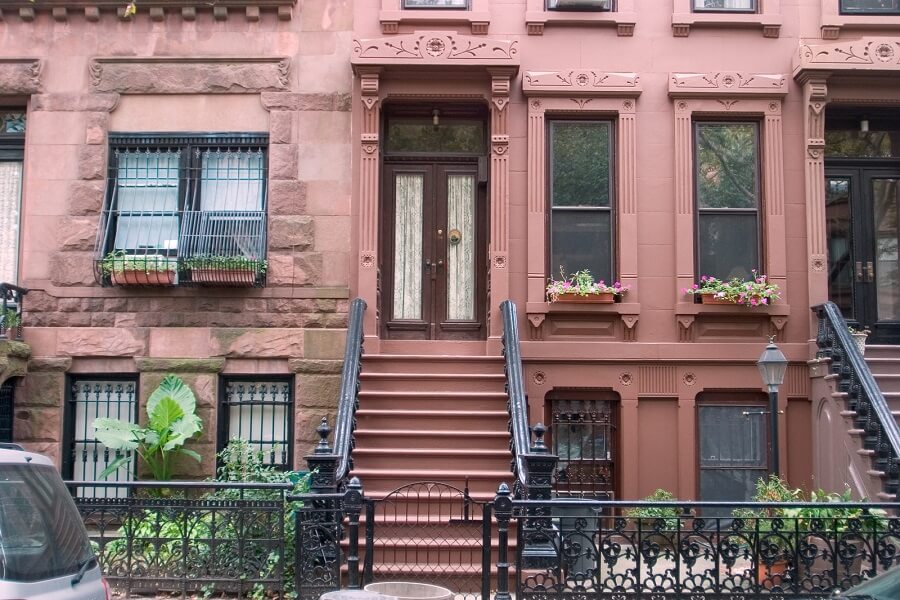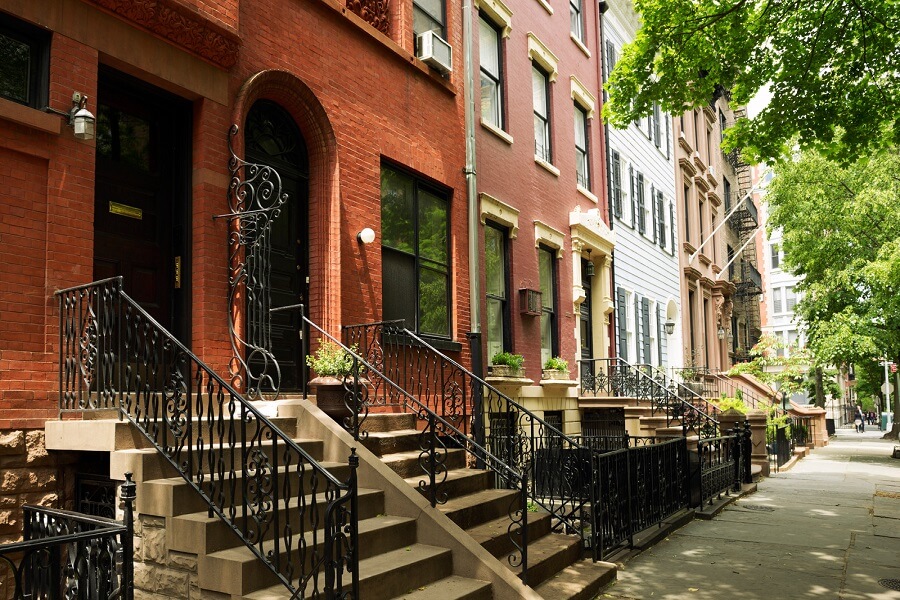Popular culture in the United States is even more famous which has made the already iconic brownstone house. In the realm of architecture marvels, there’s a class of dwellings that stands captivates with its peasant charm. Our aim is to delve into the intricate details of these remarkable designs, exploring their origins, design philosophy, and ravish able draw they pitch all who behold them.
Origins and Historical Significance
The origin of the name “Brownstone” is actually fully simple. A brownstone is built with brown sandstone that was used to cover the front of houses built in the early 19th century (1800s). The term “Brownstone” is derived from the Old English words, signifying the main building material used in their construction. These houses originated in the heart of the British Isles, particularly in regions like Cornwall and Devon, where they emerged. The original brownstone material was most often derived from the Portland brownstone Quarry in Connecticut.
What is a Brownstone?
Brownstone refers to the material that was used to construct the front area of the site. The term “Brownstone” refers not only to the building material but also to the architectural style and historical significance associated with these houses. Brownstones are mostly brick structures with distinct window ledges and front stoops that are also made of stone. Most brownstones are 4 storied buildings. They are popular for their particular facades made of brown sandstones.
Features of brownstone houses
Brownstone houses are a particular architectural style commonly found in urban areas. These houses are characterized by their unique features and historical significance. Some prominent features of brownstone houses are:
- The most expounding feature of brownstone houses is the use of brownstone as the primary building material. It gives the houses their characteristic warm and earthly tone.
- Many brownstone houses have elevated entryways known as stoops.
- The main living space in a brownstone house is typically located on the parlor floor, which is one level above the street.
- Brownstone houses are known for their intricate interior details including ornate woodwork and stained glass window.
- Brownstone houses are often multi-story structures, with several floors and a basement.
- Brownstone houses are often considered historic landmarks due to their architectural significance and the role they played in the urban development of many cities.
Where can you find Brownstone Houses?
Brownstone houses are often associated particularly in the northeastern United States. The first place to look for a brownstone house is in Brooklyn. Because the building material used to construct the majority of brownstone houses wasn’t very weather-proof. It is possible to find brownstone houses in Manhattan, particularly in the West Village. They are characterized by their distinctive brownstone facades, which are made from a type of sandstone that gives the houses their name.
Types of Brownstone
There are five (5) types of Brownstones are:
1. Portland Brownstone
This brownstone was one of the most generally used types in the construction of buildings in major cities during the 19th century. It is often associated with the classic brownstone architecture of the era. It was primarily used in Boston, Chicago, Baltimore, Connecticut, Washington, and New York City.
2. New Jersey Brownstone
New Jersey, this brownstone type is appreciated for its durability and ability to retain intricate dealing. It has been used in the construction of buildings, monuments, and churches. New Jersey brownstone was one of the largest sources of brownstone in New Jersey and New York.
3. Hummelstown Brownstone
This brownstone is recognized for its consistent texture and color. It was a popular choice for buildings and structures in the 19th century. Various government buildings in New York are built with this type of material. The Hummelstown Quarry in Hummelstown was one of the primary sources and suppliers of this type of brownstone on the east coast.
4. Bedford Brownstone
Bedford Brownstone is known for its rich reddish-brown color and classic appearance. This type of brownstone comes from quarries in Portland, Connecticut. It was mostly used in the construction of row houses and buildings in cities like New York and Boston during the 19th century.
5. Brownstone Revival
The term “brownstone revival” refers to the recovery of interest in brownstone architecture during the last of the 20th century. Many historic brownstone neighborhoods in cities like New York and Boston have experienced renewal and restoration periods, preserving the unique character of these architectural styles.
What do Brownstone Houses look like?
Brownstone houses are a type of architectural style found in urban areas. Some distinctive features of how brownstone houses look like? are:
- Brownstone houses are constructed using brownstone. The front area of these homes is usually made of this copper stone, which creates a warm and distinctive emergence.
- Brownstone houses are often built in rows or clutches. This design creates a uniform and adhesive town.
- One of the most iconic features of brownstone houses is the stoop (a small set of steps leading up to the main entrance).
- Brownstone houses tend to highlight vertical lines in their architecture.
- The basement level of brownstone houses can be used for various purposes such as additional living storage.
Why are Brownstones so Expensive?
Yes, brownstones are expensive now, because they are difficult to find now that there is no longer an active production of brownstone. Brownstones are known for their historical charm and architectural significance. Historic landmarks are considered one of the reasons for the highest cost of brownstones, which increases their value. The building’s iconic look and scarcity have also boosted its value.
Why brownstone houses became popular in NYC
The compulsion with brownstone houses in NYC began in the mid-19th century. During the 19th century, brownstones were associated with wealth and social status. Brownstones are known for their distinctive and classic architectural style. Brownstone houses became popular in New York City due to their several reasons are Architectural Appeal, Status and Prestige, Urban Expansion, variety of Uses, Cultural Significance, Architectural Revival, and Neighborhood Development. Many brownstones have been successfully renovated and updated to meet modern standards while maintaining their historic charm.
How Brownstone came to symbolize wealth in NYC
Brownstones were indicated by their elegant and intricate architectural design. The level of architectural experience set brownstones apart from simpler housing options, making them attractive to those seeking to display their wealth. Wealthy individuals who could afford to build or purchase brownstones in major neighborhoods were able to secure a reputable piece of real estate that not everyone could attain. Owing a brownstone was not just a display of wealth; it was also seen as a long-term investment.



